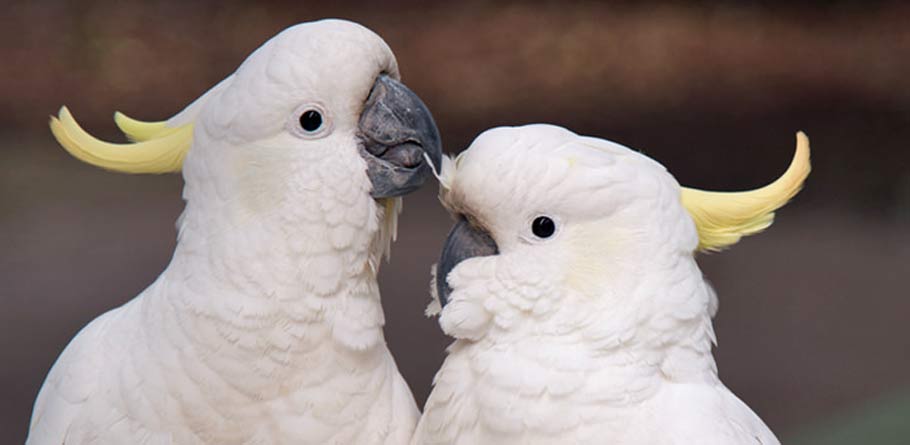Cockatoo Parrots – Understanding the Differences Between Male and Female

Cockatoo Parrots
Cockatoo parrots are captivating and intelligent birds, and if you’re considering getting one as a pet, it’s important to understand the differences between males and females. In this comprehensive guide, we will explore various aspects that distinguish male and female cockatoos, including eye color, beaks and feathers, mature behavior, feather coloration, and the option of DNA testing to determine gender. By the end, you’ll have a deeper understanding of these differences, enabling you to make an informed decision when selecting a cockatoo companion.
Comparing Eye Color
One way to differentiate between male and female cockatoos is by examining their eye color. In some species, males typically have darker and more pronounced eye coloration compared to females. This difference in eye color can vary between species, so it’s important to research the specific species you are interested in to determine if eye color can reliably indicate gender.
Beaks and Feathers
When comparing male and female cockatoos, their beaks and feathers can also provide insights. In general, male cockatoos tend to have larger and more robust beaks compared to females. Additionally, males may have more vibrant and elaborate feather patterns, especially during courtship displays. However, it’s important to note that not all species exhibit significant differences in beak size or feather patterns between males and females.
Mature Cockatoo Behavior
As cockatoos reach maturity, their behavior can also help in distinguishing between males and females. Male cockatoos often display more assertive and dominant behaviors, such as vocalizing loudly, engaging in territorial displays, and exhibiting more active and playful tendencies. Female cockatoos, on the other hand, may demonstrate a calmer demeanor and exhibit more independent behaviors. It’s important to remember that individual personalities can vary, and these behavioral differences are generalizations rather than absolute rules.
Feather (Plumage) Color Differences
In some cockatoo species, there are noticeable differences in feather coloration between males and females. Males may showcase more vibrant and striking feather colors, with bold patterns and brighter hues. Females, on the other hand, may exhibit softer and more subdued feather colors, with a less pronounced pattern. These differences in plumage can be particularly evident during breeding seasons or courtship displays.
DNA Testing to Determine Gender
If visual cues are inconclusive or you require a definitive determination of a cockatoo’s gender, DNA testing can be a reliable method. DNA testing involves a simple blood or feather sample and can accurately determine the genetic sex of the bird. This method is especially useful for species that do not display obvious physical differences between males and females or for young birds whose gender is not yet apparent. Consulting with an avian veterinarian or specialized laboratory can provide further information on DNA testing options for cockatoo parrots.
Conclusion
Understanding the differences between male and female cockatoo parrots can aid in choosing the right companion for you. By considering factors such as eye color, beak size, feather coloration, mature behavior, and DNA testing, you can make an informed decision when selecting a cockatoo as a pet. Remember that while these differences can provide valuable insights, each cockatoo possesses a unique personality, and individual variation should be considered. Building a loving and nurturing relationship with your cockatoo, regardless of its gender, is the key to a fulfilling companionship.
Searches: Cockatoo parrot, Cockatoo species, Cockatoo bird, Cockatoo pet, Cockatoo care, Cockatoo behavior, Cockatoo characteristics, Cockatoo breeding, Cockatoo lifespan, Cockatoo diet, Cockatoo vocalization, Cockatoo training, Cockatoo colors, Cockatoo feather patterns, Cockatoo habitat, Cockatoo enclosure, Cockatoo socialization, Cockatoo intelligence, Cockatoo bonding, Cockatoo health, Cockatoo grooming, Cockatoo enrichment, Cockatoo interaction, Cockatoo personalities, Cockatoo conservation.
